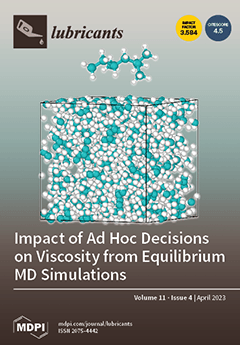In this study, a Ni–WC–TiC alloy coating was fabricated by laser to improve the wear resistance and service life of Cr12MoV die steel. The microstructures and phases of the coating were analyzed by a scanning electron microscope (SEM), an energy dispersive spectrometer (EDS),
[...] Read more.
In this study, a Ni–WC–TiC alloy coating was fabricated by laser to improve the wear resistance and service life of Cr12MoV die steel. The microstructures and phases of the coating were analyzed by a scanning electron microscope (SEM), an energy dispersive spectrometer (EDS), and X-ray diffraction (XRD). The properties of the coating were tested by a hardness and friction wear tester. The results show that the coating has a good metallurgical bond with the substrate. The microstructures from top to bottom are mainly equiaxed crystal, columnar dendrite, and cellular dendrite. Combined with the physical phase analysis and elemental distribution of the coating, there are some phases, such as γ~(Fe, Ni), Cr
23C
6, WC, TiC, Fe
3W
3C, and Cr
2Ti. Compared with the Cr12MoV steel substrate, the Ni–WC–TiC alloy coating has good properties of hardness and wear resistance. In the coating, the background region of the grains is γ~(Fe, Ni). From the EDS results, it can be seen that there are some rod-like particles, Cr
23C
6, which are uniformly distributed on the top of the coating. Some W and Ti carbides form in grains. The addition of TiC particles improves the WC particles refinement. The highest hardness of the coating is 770.7 HV
0.5, which is approximately 3.3 times higher than that of the substrate. The wear volume is 0.26 mm
3, or approximately 8.6% of the substrate, which is contributed to the reinforced phases and finer microstructure of the coating. The wear volumes of the Cr12MoV substrate are 1.8 and 4.5 mm
3 at 20 and 60 min, respectively. While the wear volumes of the Ni–WC–TiC coating are 0.2 and 0.7 mm
3 at 20 and 60 min, respectively. The increased amplitude of the coating’s wear volume is smaller than that of the substrate. The results show that this Ni–WC–TiC alloy coating is helpful for improving the properties and service life of Cr12MoV die steel.
Full article





